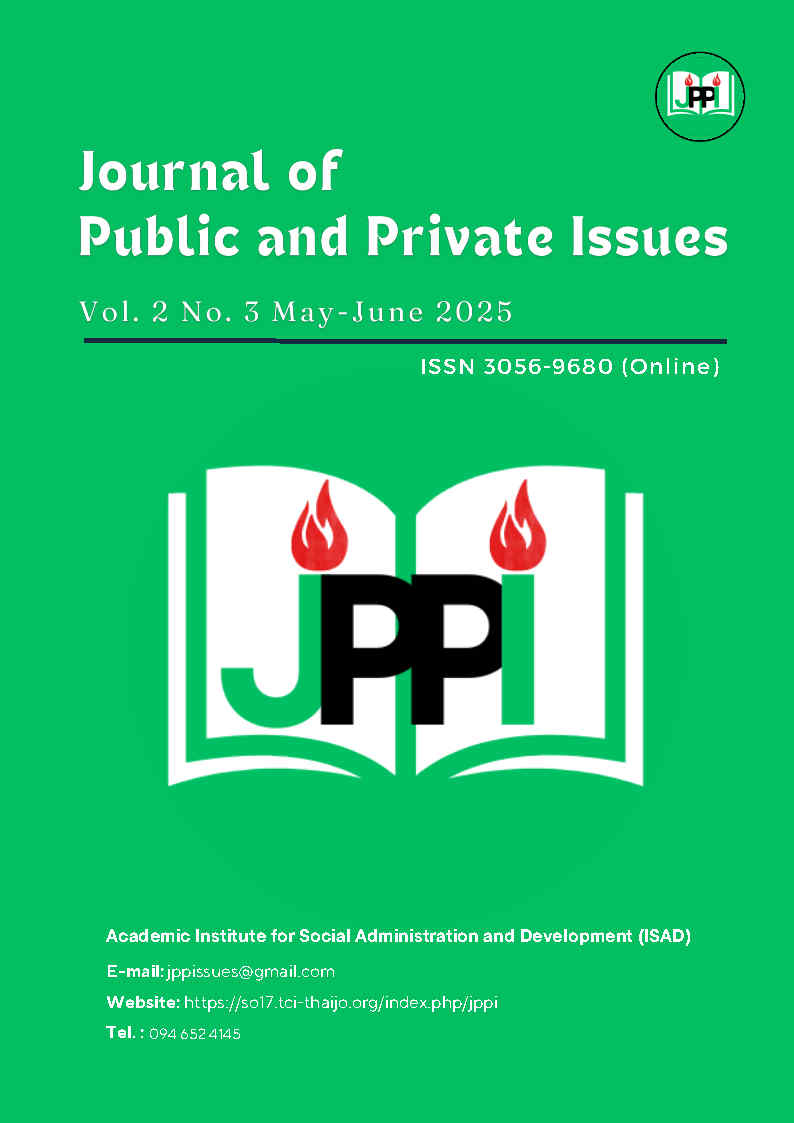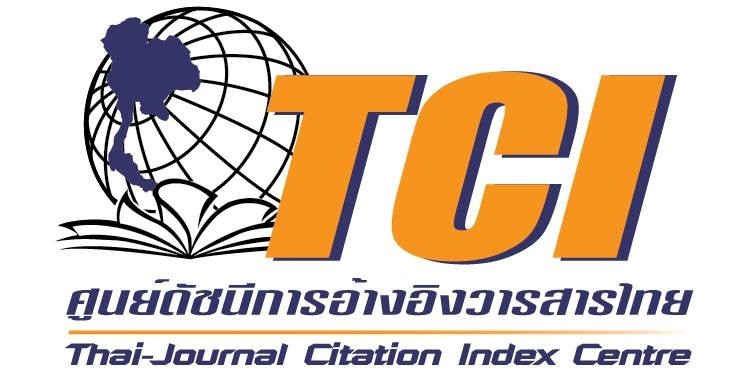The management of innovation in the public sector to enhance effective and sustainable public services
คำสำคัญ:
innovation, local innovation, digital innovation, innovation management, public sector reformบทคัดย่อ
This article aims to analyze innovation in public services, including strategies and policies that support innovation development. It also seeks to identify structural and bureaucratic challenges hindering innovation management, while proposing approaches and policy recommendations to foster a sustainable culture of innovation within the public sector. Innovation in the public sector is critically important for advancing public services and public administration in an era were technology and big data play increasingly pivotal roles. Public sector innovation refers to the development and adoption of new technologies and processes in service delivery and administration to boost the efficiency and transparency of government operations. Effective innovation management in the public sector must consider proper resource allocation, risk management, and strategic adaptation to rapidly changing environments. This article discusses the development of strategies and policies that support the adoption of technology in the public sector, examining case studies such as Estonia’s e-Government and the adoption of AI in Singapore’s civil service, as well as challenges in managing innovation within the Thai public sector. Furthermore, the article analyzes structural issues, the creation of an innovation-oriented culture in government agencies and provides recommendations on developing public sector innovation in Thailand that can lead to sustainability by introducing new approaches to efficiently utilize resources, reduce environmental impact, and improve people's quality of life without compromising the future. and more effective public service delivery.
เอกสารอ้างอิง
Amabile, T. M. (1996). Creativity in Context: Update to the Social Psychology of Creativity. Westview Press.
Amabile, T. M. & Pratt, M. G. (2016). The dynamic componential model of creativity and innovation in Organizations: Making progress, making meaning. Research in Organizational Behavior, 36, 157–183.
Ananttanathorn, A. (2023). Development of Local Digital Innovation in Thai Local Administrative Organizations. Faculty of Political Science and Law, Burapha University.
Brynjolfsson, E., & McAfee, A. (2014). The Second Machine Age: Work, Progress, and Prosperity in a Time of Brilliant Technologies. W. W. Norton & Company.
Borins, S. (2014). The persistence of innovation in government. Brookings Institution Press.
Castells, M. (2010). The Rise of the Network Society. Wiley-Blackwell.
Chamchong, P. (2018). Collaborative Governance: Local Innovation Through. COPAG Press, College of Politics and Governance, Mahasarakham University.
Chesbrough, H. (2003). Open Innovation: The New Imperative for Creating and Profiting from Technology. Harvard Business Press.
Chesbrough, H. (2019). Open Innovation Results: Going Beyond the Hype and Getting Down to Business. Oxford University Press.
Christensen, C. M. (2013). The Innovator’s Dilemma: When New Technologies Cause Great Firms to Fail. Harvard Business Review Press.
Consulting, C. (2017). Unleashing the potential of artificial intelligence in the public sector [PDF]. Capgemini. Retrieved from https://www.capgemini.com/wp-content/uploads/…/ai-in-public-sector.pdf
Dess, G. G., & Eisner, A. B. (2012). Strategic Management: Text and Cases. McGraw-Hill Education.
Digital Government Development Agency (Public Organization). (2022). Thailand Digital Government Development Report. Digital Government Development Agency.
Drucker, P. F. (2014). Innovation and Entrepreneurship: Practice and Principles. Routledge.
Ford, M. (2015). Rise of the Robots: Technology and the Threat of a Jobless Future. New York: Basic Books.
Glaeser, E. L., & Cutler, D. M. (2021). Survival of the City: Living and Thriving in an Age of Isolation. Penguin Press.
Hill, C. W. L., Jones, G. R. & Schilling, M. A. (2012). Strategic Management: An Integrated Approach (10th ed.). New York: Cengage Learning.
Kaplan, R. S., & Mikes, A. (2012). Managing Risks: A New Framework. Harvard Business Review.
Kenprom, P. (2015). Principles of Public Administration. Bangkok: Chulalongkorn University Press.
Kim, W. C., & Mauborgne, R. (2017). Blue Ocean Shift: Beyond Competing-Proven Steps to Inspire Confidence and Seize New Growth. Hachette UK.
Kotter, J. P. (1996). Leading Change. Harvard Business School Press.
Laothong, P. (2021). Potential Development of Surin Province Silk Weaving Groups with Community-Based Innovation. Rajamangala University of Technology Isan, Surin Campus.
Limtasiri, O. (2013). Innovation and Technology for Learning Management. 6th ed. Bangkok: Department of Curriculum and Instruction, Faculty of Education, Ramkhamhaeng University.
Mahaphon, M., & Kanlayanamit, K. (2021). The Creation of Public Organization Management Innovation. Suan Sunandha Rajabhat University Academic Journal, 7(1), 295-305.
Mazzucato, M. (2018). The Entrepreneurial State: Debunking Public vs. Private Sector Myths. Penguin Books.
Mimak, W. (2023). Innovative Organization for Managing Volatility, Uncertainty, Complexity, and Ambiguity in Crisis Situations. [Presentation]. Academic Seminar of the Doctor of Philosophy Program in Public Administration, Faculty of Political Science, Ramkhamhaeng University, on “Public Administration Innovation in Times of Crisis,” January 27, Bangkok, Thailand.
Nonaka, I., & Takeuchi, H. (1995). The Knowledge-Creating Company: How Japanese Companies Create the Dynamics of Innovation. Oxford University Press.
OECD. (2020). Digital Government Review of Estonia: Towards a data-driven public sector. OECD Publishing. From https://doi.org/10.1787/4dee8c3e-en.
Office of the Prime Minister’s Secretariat and colleagues. (2018). Government Performance Report of General Prayut Chan-o-cha, Prime Minister, Year 3 (September 12, 2016–September 12, 2017). Bangkok: Cabinet and Royal Gazette Publishing Office.
REN21. (2021). Renewables 2021 Global Status Report. REN21 Secretariat.
Tidd, J., & Bessant, J. (2020). Managing Innovation: Integrating Technological, Market and Organizational Change. Wiley.
Tushman, M. L., & O'Reilly, C. A. (1996). Ambidextrous Organizations: Managing Evolutionary and Revolutionary Change. California Management Review.
UNCTAD. (2019). Technology and Innovation Report 2019: Harnessing Frontier Technologies for Sustainable Development. United Nations.
Ventola, C. L. (2014). “Medical Applications for 3D Printing: Current and Projected Uses.” Pharmacy and Therapeutics, 39(10), 704–711.
Von Hippel, E. (2005). Democratizing Innovation. MIT Press.
World Economic Forum. (2020). The Future of Jobs Report 2020. Geneva.
ดาวน์โหลด
เผยแพร่แล้ว
รูปแบบการอ้างอิง
ฉบับ
ประเภทบทความ
สัญญาอนุญาต
ลิขสิทธิ์ (c) 2025 Journal of Public and Private Issues

อนุญาตภายใต้เงื่อนไข Creative Commons Attribution-NonCommercial-ShareAlike 4.0 International License.


 ผศ.ดร.ละมัย ร่มเย็น
ผศ.ดร.ละมัย ร่มเย็น






